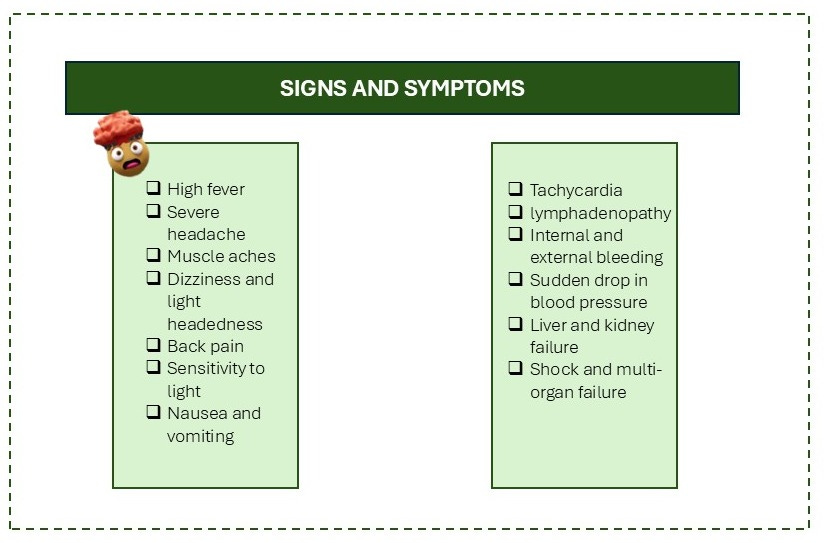UNDERSTANDING THE CONGO VIRUS; A GROWING GLOBAL CONCERN:
When it comes to the infectious disease epidemic, some names sound more intimidating than others. Crimean - Congo Haemorrhagic fever CCHF is one of those names that might make you sit up and take notice. But have you ever wondered what this virus is, and why should we be concerned about it? Why is everyone taking its name horrifically? Let's dive into the essentials of CCHF and what you need to know to stay informed.
In recent years, the Congo virus, also known as Crimean-Congo Haemorrhagic Fever (CCHF), has emerged as a critical public health concern in several parts of the world. The disease, transmitted primarily through ticks or contact with infected animals or humans, poses a significant threat due to its high mortality rate and potential for outbreaks.
While relatively unknown compared to other viral diseases, Congo virus infections have raised alarm in regions where tick populations thrive, and animal-human interactions are frequent. If we look at the data of Pakistan, a total of 6 death cases have been reported in June 2023, and if any precautionary measures are not taken it can be worse than this[i].
WHAT IS CONGO VIRUS? UNMASKING ITS SPREAD; HOW IT IS TRANSMITTED:
Crimean-Congo haemorrhagic fever (CCHF), a viral infection caused by a single-stranded RNA virus i.e., tick-borne virus (Nairovirus) of the Bunyaviridae family. It was first identified in 1944 in the Crimean region and later in the Congo region in 1960[ii]. The primary vector of the Congo virus is the Hyalomma tick, which thrives in rural and farming areas. These ticks are carriers of the virus, and humans can contract the infection either through direct tick bites or by crushing an infected tick. The virus primarily affects animals such as cattle, goats, and sheep, but humans can become infected either through tick bites or by handling infected animal tissues. Medical supply contamination, reuse of needles, and inadequate sterilization can also result in hospital-acquired diseases. The majority of incidents are observed in livestock industry workers, such as farmers, veterinarians, and employees of slaughterhouses.
The virus is endemic in several regions across Africa, Eastern Europe, the Middle East, and Asia. Due to its zoonotic nature, the virus often circulates silently among animals until human outbreaks occur, usually linked to agricultural or veterinary activities.
SPOTTING THE SIGNS: SYMPTOMS OF CONGO VIRUS INFECTION:
Symptoms usually start to show up 1–13 days after an infected tick bite or contact with contaminated animal or human fluids, depending on how the infection spreads. The illness presents with unclear, flu-like symptoms at first, which can make an early diagnosis difficult. The virus's route of acquisition determines how long the incubation period is. The incubation period that follows a tick bite infection typically lasts one to three days, with a maximum of nine days. After coming into touch with contaminated blood or tissues, the incubation period lasts typically five to six days, however, it has been shown to go up to 13 days, and the mortality rate is approx. 30%[iii].
TREATMENT AND PREVENTION:
Since there isn't a specific antiviral treatment for the Congo virus at this time, the main goal of patient care is to manage symptoms such organ failure, dehydration, and bleeding. Usually, infected people are kept apart to stop the infection from spreading.
The key to containing outbreaks is prevention. Tick bites can be reduced by using insecticides to reduce tick populations and by dressing protectively, especially for farmers and veterinarians. When working with possibly diseased animals, those who handle livestock should wear protective gear and gloves. It's crucial to wear long sleeves, use insect repellent, and check for ticks after outdoor activities while in high-risk areas. To stop future spread, hospitals need to maintain stringent infection control measures, such as staff protective gear and appropriate sterilization.
GLOBAL THREAT AND NEED FOR AWARENESS:
The Congo virus poses a major concern due to its high fatality rate and potential for person-to-person transmission, even though it may not be as widely distributed internationally as some other infectious diseases. The likelihood of CCHF spreading to new locations cannot be disregarded, as rising globalization and climate change may allow tick populations to spread farther.
Increasing awareness among medical professionals, farmers, and the general public is essential for early detection and control of the virus in areas where it is currently endemic. To stop widespread epidemics, public health authorities must make investments in early diagnosis, vector control, and high-risk population protection.
Global collaboration is also crucial in the fight against zoonotic illnesses like CCHF. Effective treatment and prevention methods can be developed, and cross-border transmission can be prevented with the support of surveillance, research, and data sharing among impacted nations.
CONCLUSION:
Although the Congo virus is an infectious disease with a high death rate, the dangers can be controlled with the right knowledge and precautions. Reducing the spread of this severe virus requires preventing tick bites, managing tick populations, and making sure healthcare facilities are equipped to handle patients properly. Consciousness and awareness about the Congo virus will continue to be essential for preserving the health of people and animals as global health issues change.
[i] Masood I, Tahir MJ, Naeem A, Shrateh ON, Ahmed A. The new wave of Congo virus in Pakistan: emerging threat. Trop Med Health. 2023 Nov 14;51(1):62. doi: 10.1186/s41182-023-00559-z. PMID: 37957782; PMCID: PMC10644479.
[ii] Masood I, Tahir MJ, Naeem A, Shrateh ON, Ahmed A. The new wave of Congo virus in Pakistan: emerging threat. Trop Med Health. 2023 Nov 14;51(1):62. doi: 10.1186/s41182-023-00559-z. PMID: 37957782; PMCID: PMC10644479.
[iii] https://www.who.int/news-room/fact-sheets/detail/crimean-congo-haemorrhagic-fever



